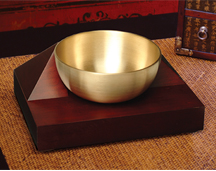It may start in your head, but it’s often your body that bears the brunt of chronic stress. A likely risk factor for heart disease and cancer — the two leading causes of death in the United States — chronic stress has also been linked to insomnia, migraines, lowered immunity, increased abdominal fat, and digestive problems.
Although it might not seem as dire a problem as smoking or a decades-long fast-food habit, chronic stress may be every bit as damaging. Scientists aren’t clear how it contributes to illness, but there are likely both behavioral and physiological factors at work. When you’re under stress, you’re less likely to eat well or exercise, but evidence also suggests that the release of stress hormones could promote low-level inflammation (an effect that may, in turn, contribute to a host of ailments and chronic illnesses).
Reducing stress, then, is an absolute must for good health. But rather than rely on the annual vacation to melt away tension, build in daily prevention. “Our bodies and minds are shrieking for us to take better care of ourselves,” says Alice Domar, Ph.D., founder of the Domar Center for Mind/Body Health in Waltham, Massachusetts.
Meditation
Everybody needs a sanctuary, a place to rest and renew. The beauty of meditation — a proven and profound form of self-care for mind and body — is that almost anytime, anywhere, you can access that place of restorative calm.
Yet for some, meditation sounds mysterious or intimidating, probably because of some common misconceptions: that it’s dry or boring or “too spiritual”; that it’s an esoteric practice for those operating on some higher, more rarefied plane.
Yes, meditation is an ancient spiritual practice — one that cuts across different religions and many different traditions. But what it boils down to — however it’s practiced and whatever form it takes — is this: To meditate simply means to rest in moments of appreciative, exquisite attentiveness. Moments that allow us to savor the experience of living and that make us feel both deeply calm and deeply alert, in tune both with our self and with the world around us. Moments we come away from feeling refreshed, renewed, and engaged. Meditation is a way of communing with spirit.
We all know how to meditate; it’s an instinctive ability. If you’ve ever been deliciously absorbed gazing at the flow of a river, the dance of a fire, or the twinkle of stars, you’ve enjoyed meditative moments. And you can create those moments almost anywhere at any time. If you have a favorite place in your home in which to meditate, that’s wonderful. But you can meditate just as effectively sitting at your desk or on a park bench, or lying in the grass. The fact is, the juicier and more sensual you let meditation be, the more you will get out of it.
Meditating on a daily basis is easy. Give yourself a space of time — 10 to 20 minutes morning and afternoon, or if that’s not possible, a few minutes here and there throughout the day. Choose a pleasing, peaceful focus for attention — sensations, such as the flow of your breath; a sound you make, such as ahhh; or a visual image, such as waves coming to shore. This is your home base. Lightly focus your attention, and when your mind wanders off, gently come back to home base. Minds wander — a lot. So go easy on yourself and accept the process. Set your Meditation Chime Timer (Now & Zen, $199.95) for 20 minutes. When you hear the gentle chime, slowly open your eyes.
Our Meditation Chime Clock’s long-resonating Tibetan bell-like chime makes waking up and meditating a beautiful experience – its progressive chimes begin your day with grace.

Meditation Chime Timer by Now & Zen, Inc. - Boulder, CO
Those are the basics, but there is no one right way to meditate; explore what works for you. These two simple meditations will help you get started.
Meditation One: Sensuousness of Breath
Time: 5 to 10 minutes.
When and Where: Anytime, anywhere.
Position: Sitting comfortably or lying down, eyes open or closed.
Intention: I bask in healing pleasure. I receive the nourishment into every cell of my body.
One of the most universal meditation practices is to take pleasure in the flow and rhythm of breath. Buddha described this as “breathing in and out sensitive to rapture.”
1. Breathe out with a deep sigh a few times and notice what that feels like. Let yourself make quiet whooshing sounds. If you feel a stretch or a yawn coming on, give in to it. Gently ask yourself, “What pleasure do I feel in breathing?”
2. Explore the sensations that accompany breathing — the feeling of the chest expanding and contracting, the gentle touch of the air gliding through the nose and down the throat, filling and then emptying the lungs. How luscious can you let breathing be? Perhaps you enjoy the relaxing ebb and flow of the breath, or love breathing’s whispering sounds. If you’re outside, you might savor the fragrance of grass, trees, or flowers as you inhale. You might feel simple wonder at receiving this essential gift from life.
3. Breathe with this type of awareness for 10 minutes or so, allowing your attention to be soft and undemanding, like rose petals on your skin. Thoughts and feelings about your life will come into your awareness; this is healthy and healing, so don’t try to block them out. Just keep coming back, gently, to the sensuousness of breath when you can.

Singing Bowl Meditation Timer by Now & Zen, Inc.
Meditation Two: Heart Warming
Time: 5 to 20 minutes.
When and Where: Anytime, although the end of the day is nice. Try to find a cozy place.
Position: Sitting comfortably or lying down, eyes open or closed.
Intention: I am awake to love. I am ready to give and receive.
In this meditation you give yourself time to feel the emotional impact of all that is in your heart. Be leisurely, and linger in any of the meditation’s phases for as long as you like.
1. Begin by thinking of someone or something you love without reservation. Notice the sensations that arise in your heart and let yourself be with whatever is there — warmth, aching, joy, longing.
2. Bring both hands to your heart, feeling the warm contact of your palms against your chest. Imagine your heart being warmed by your love, melting any cold places, any part of you that is afraid, grieving, or lonely.
3. Make a humming sound, such as ahhh or ohhmm. Enjoy the way the sound vibrates in your chest for as long as you like. Then gradually let the sound fade away; you can return to it at any time.
4. Again notice the contact of your hands on your heart. Slowly open your arms outward, as you would to embrace someone. Take a few breaths and then slowly bring your hands back to your chest. Repeat this movement several times with great leisure. The simple motion of opening to give and drawing in to receive is a yoga of the heart, a way of expressing balance. End by bringing your hands back to your heart; pause, savoring the sensations and feelings.
Benefits of Meditation
– Promotes relaxation
– Enhances health
– Cultivates vitality
– Fosters clarity
– Increases focus
– Reduces stress